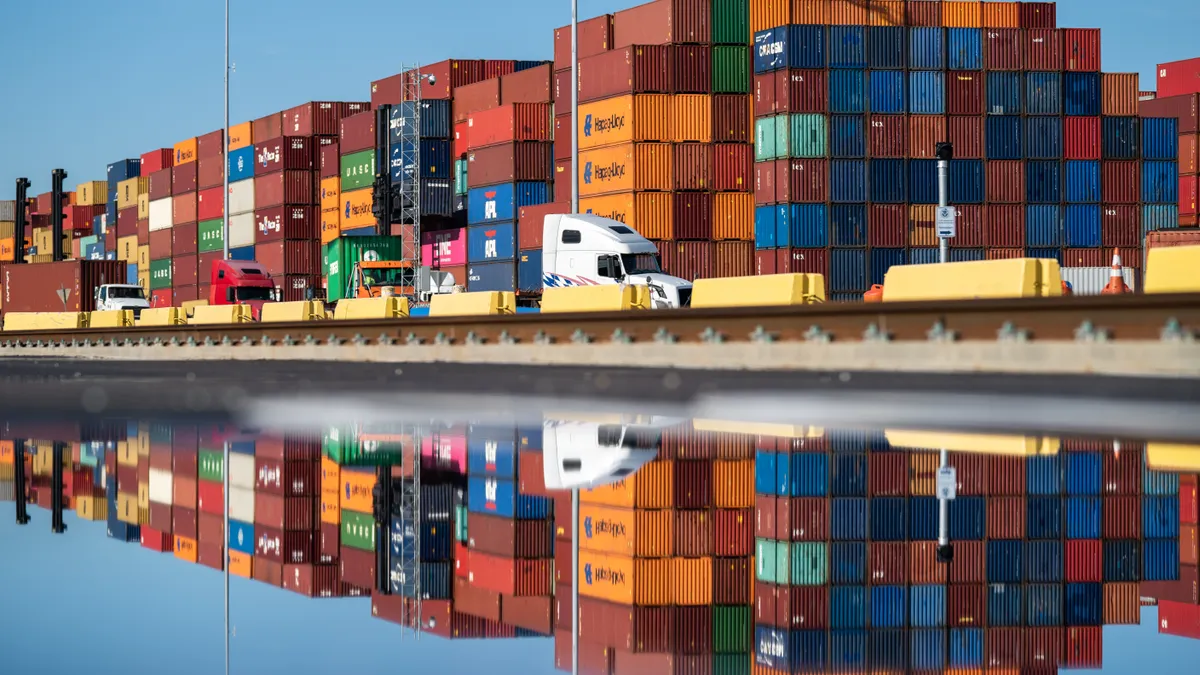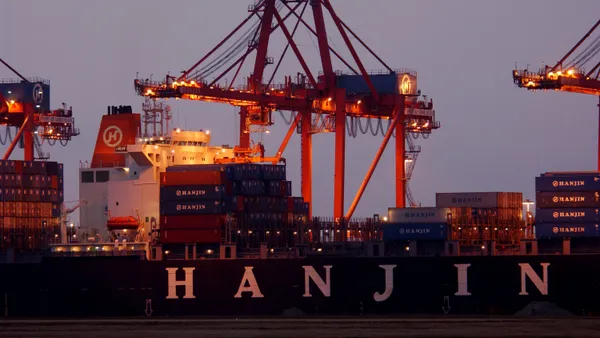Dive Brief:
- Despite multiple global trade disruptions, import volumes at major U.S. ports are expected to reach 2 million total TEUs in May, according to the Global Port Tracker report from the National Retail Federation and Hackett Associates.
- May’s projected number of total TEUs is expected to be up 5.5% year over year and to be the highest level since October 2023’s 2.06 million total TEUs. The report tracks volumes from the top 12 ports.
- West Coast ports seem to be gaining volumes as shipper uncertainty remains. The Port of Los Angeles reported a 64% year-over-year surge in loaded import cargo volumes in February.
Dive Insight:
Even with existing challenges surrounding the ocean freight market, it has not deterred cargo coming into the U.S.
Besides the Port of Los Angeles, other major ports like Port of New York and New Jersey and Port Houston have reported a rise in cargo volumes in 2023 so far.
The suspension of vessel traffic at the Port of Baltimore is a prominent example of recent disruptions plaguing supply chains. The incident comes after several attacks on cargo vessels en route to the Suez Canal and water restrictions at the Panama Canal disrupted global trade.
But quick planning from supply chain managers, along with regional and commodity-based factors, may be fueling resiliency in global ocean logistics.
For example, the Port of Baltimore handles a majority of roll-on/roll-off cargo such as autos and farm equipment. Automakers began to reroute shipments in the wake of the bridge collapse to mitigate possible delays. And East Coast ports immediately began to acknowledge their willingness and capacity to handle cargo reroutes.
While water restrictions at the Panama Canal did lower the number of vessels permitted, container ships were better equipped to handle the restrictions. This is due to the maximum draft of 44 feet which serves up to 70% of containerships transiting the waterway, Rob Handfield, professor of supply chain management at North Carolina State University, told Supply Chain Dive.
There are now plans in place to increase booking slots along the major waterway to restore stability, a spokesperson from the Panama Canal told Supply Chain Dive via email.
“Though low-water measures in Panama did not prove terribly disruptive to container traffic, the easing of Panama Canal transit restrictions as the region enters the long-awaited rainy season is nonetheless welcomed news in the industry, and has lead Maersk to restore one of its services that had stopped using the canal,” Freightos Head of Research Judah Levine said in a weekly update on April 9.
Red Sea attacks remain an ongoing threat, but the situation has mainly affected imports into Europe.
“The European furniture retail sector is heavily exposed to imports from Asia by sea given there are fewer alternative transport mode options than for retailers in the U.S.,” according to a February blog post from S&P Global.
Cargo reroutes have “resulted in relatively stable supply chains within a short period of time,” Hackett Associates Founder Ben Hackett said in the release. “A word of caution, however, is that any further pressures on capacity could seriously impact the market.”















